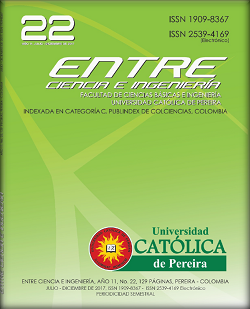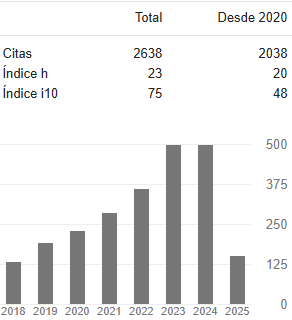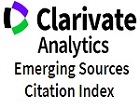Development process of the software Virtual Algebra Tiles as a tool to increase academic retention
DOI:
https://doi.org/10.31908/19098367.3550Keywords:
algebra tiles, education, digital educational resources, information and communication technologiesAbstract
This paper describes the process of development and subsequent validation of a Digital Educational Resource, which is expected to allow students to use Algebra Tiles from a mobile device, in order to improve their knowledge of algebra concepts. The development of the project was conducted under the guidelines of instructional design and its validation was performed in the context of a pilot test in which teachers and students participated. From the results of this experience it can be inferred that the adoption of new mobile technologies in educational processes is relevant; therefore teachers and researchers should explore this type of resources to complement their lecture classes. The results achieved in the process of validation are promising and permit to envision that in the long term, the use of these educative resources will help students improve their mathematical knowledge.
Downloads
References
UNESCO, «Situación Educativa de América Latina y el Caribe: Hacia la educación de calidad para todos al 2015,» Ediciones del Imbunche, Santiago de Chile, 2013.
G. E. Huesca Ramírez y B. Castaño Corvo, «Causas de Deserción de Alumnos de Primeros Semestres de una Universidad Privada,» Revista Mexicana de Orientación Educativa, vol. 5, nº 12, pp. 34 - 39, 2007.
Ministerio de Educación Nacional , «Deserción Estudiantil en la Educación Superior en Colombia,» Bogotá, 2009.
F. Osorio Barrera, D. Maldonado y C. Rodríguez, «Calidad de la Educación Básica y Media en Colombia: Diagnóstico y Propuestas,» 2012.
M. Xenos, C. Pierrakeas y P. Pintelas, «A survey on Student Dropout Rates and Dropout Causes Concerning the Students in the Course of Informatics of the Hellenic Open University,» Computers & Education, vol. 39, nº 4, p. 361–377, 2002.
F. Araque, C. Roldán y A. Salguero, «Factors Influencing University Dropout Rates,» Computers & Education, vol. 53, nº 3, pp. 563 - 574, 2009.
P. M. Pascua-Cantarero, «Factors Related to Dropping Out in the Freshman and Sophomore Years in the Career of Teaching Mathematics at Universidad Nacional de Costa Rica,» Revista Electrónica Educare, vol. 20, nº 1, 2016.
K. McKenzie y R. Schweitzer, «Who succeeds at university? Factors predicting academic performance in first year Australian university students,» Higher education research and development, vol. 20, nº 1, pp. 21 - 33, 2001.
M. E. Murcia y J. C. López Henao, «Educación matemática en Colombia, una perspectiva evolucionaria,» Entre Ciencia e Ingeniería, vol. 9, nº 18, pp. 23-30, 2015.
N. A. Zin, W. S. Y. Mat y A. Jaafar, «Digital game-based learning (DGBL) model and development methodology for teaching history,» WSEAS transactions on computers, vol. 8, nº 2, pp. 322--333, 2009.
F. Borges, «La frustración del estudiante en línea. Causas y acciones preventivas,» Digithum, nº 7, 2005.
A. Roehl, S. L. Reddy y G. J. Shannon, «The flipped classroom: An opportunity to engage millennial students through active learning,» Journal of Family and Consumer Sciences, vol. 105, nº 2, p. 44, 2013.
Ministerio de Educación Nacional de Colombia, Recursos Educativos Digitales Abiertos, Bogotá, 2012.
R. Zhang, J. Zhang, D. Steele y L. Feng, «Findings about Students with Great Discrepancy,» de International Conference on Interactive Collaborative Learning (ICL), Dubai, 2014.
B. Flores , C. Kubo y D. Piana, «Undergraduate Student Retention Strategies for Urban Engineering Colleges,» de 30th ASEE/IEEE Frontiers in Education Conference, Kansas City, 2000.
V. L. Tinio, ICT in Education, 2003.
E. Murcia, J. L. Arias y M. S. Osorio, «Software educativo para el buen uso de las TIC,» Entre Ciencia e Ingeniería, vol. 19, nº 10, pp. 114-125, 2016.
G. Mejía y N. Barrios, «El álgebra geométrica como recurso didáctico en la ensenanza-aprendizaje del álgebra escolar,» de 9° Encuentro Colombiano de Matemática Educativa, Valledupar, 2008.
C. Peterson, «Bringing ADDIE to life: Instructional design at its best,» Journal of Educational Multimedia and Hypermedia, vol. 12, nº 3, pp. 227 - 242, 2003.
S. Castro, «Algebra Tiles Effect on Mathematical Achievement of Students with Learning Disabilities,» Capstone Projects and Theses, 2017.
G. Mejía y N. Barrios, EL ÁLGEBRA GEOMÉTRICA COMO RECURSO DIDÁCTICO EN LA ENSEÑANZA-APRENDIZAJE DEL ÁLGEBRA ESCOLAR., 2008.
J. Richardson y R. M. Bachman, «A New Take on an Old Square,» Mathematics Teaching in the Middle School, vol. 110, nº 9, p. 6, 2017.
Universidad de Antioquia, «Álgebra Geométrica,» Aprende en Línea , [En línea]. Available: http://aprendeenlinea.udea.edu.co/lms/moodle/mod/resource/view.php?id=47783. [Último acceso: 12 Marzo 2016].
J. O. Ballén Novoa, El álgebra geométrica como recurso didáctico para la factorización de polinomios de segundo grado, Bogotá, 2012.
Z. Cataldi, F. Lage, R. Pessacq y R. García Martínez, «Ingeniería de Software Educativo,» Revista Latinoamérica de Tecnología Educativa, 2007.
Ministerio Nacional de Colombia, «Taller de Evaluación - Repositorio Nacional REDA,» Colombia Aprende, [En línea]. Available: https://www.google.es/url?sa=t&rct=j&q=&esrc=s&
J. C. Nesbit , K. Belfer y Tracey Leacock, «Learning object review instrument (LORI),» E-learning research and assessment network , 2003.
Downloads
Published
Issue
Section
License
Copyright (c) 2018 Entre ciencia e ingeniería

This work is licensed under a Creative Commons Attribution-NonCommercial 4.0 International License.



















